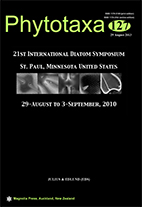Abstract
Swamp Lake, Yosemite National Park, is the only known lake in California containing long sequences of varved sediments and thus has the potential to provide a high-resolution record of climate variability. This preliminary analysis of the diatom assemblages from a 947-cm-long composite sediment core (freeze core FZ02–05; 0–67 cm, Livingstone core 02–05; 53–947 cm) shows that the lake has been freshwater, oligotrophic, and circumneutral to alkaline throughout its ~16,000-year-long history. The first sediments deposited in the lake show that the vegetation in the watershed was sparse, allowing organic matter-poor silt and clay to be deposited in the basin. The basin filled quickly to a depth of at least 5 m and remained at least that deep for most of the sediment record. Several short intervals provided evidence of large fluctuations in lake level during the Holocene. The upper 50 cm of the core contains evidence of the Medieval Climate Anomaly and Little Ice Age.

